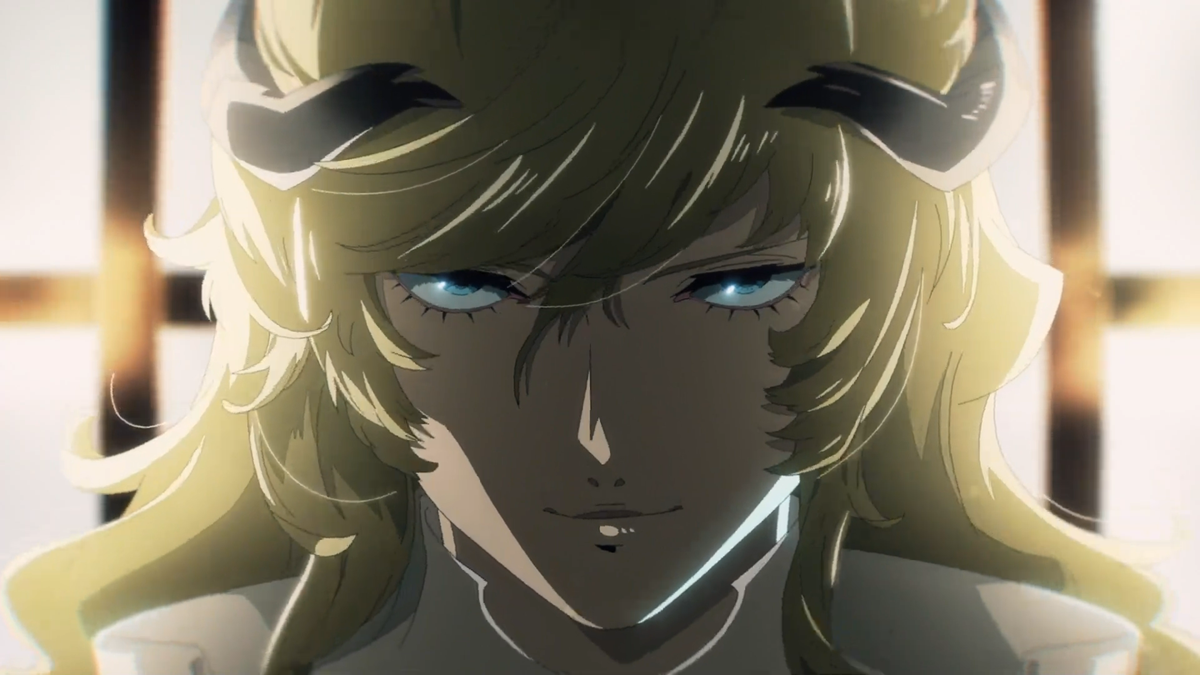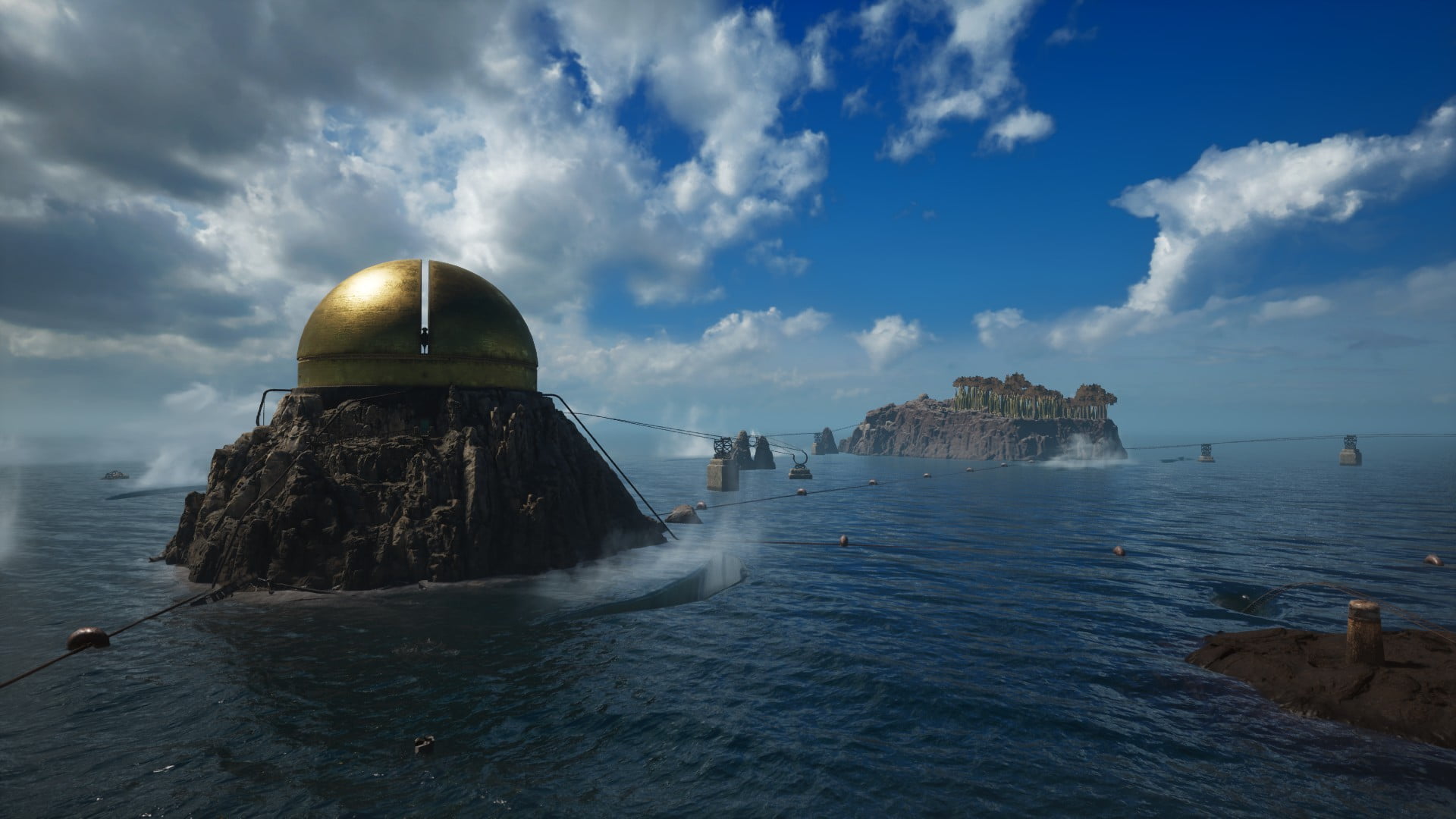Every year, I tell myself to make more time to hang around the IndieCade showcase at E3. Where so much of the show is overtaken by the same big-budget, blockbuster franchises, the IndieCade booth is an oasis of creativity and originality. Games both digital and physical, traditional and experimental, and so on line the modest space IndieCade carves out for itself among the glitz and glamour of E3.
And with the show open to the public this year, it also proved to be a fantastic chance for the masses to be exposed to games they otherwise might not have heard of. It’s become one my favorite stops at the show because I can always count on seeing something new and unique, or at the very least something interesting.
This year, I was only able to try three games, due to how packed our schedule was this year, but each of them stuck with me.
A Case of Distrust
As a fan of text adventures, thanks in large part to the popularity of the game engine Twine, A Case of Distrust immediately caught my eye. Set in San Francisco in 1924, A Case of Distrust follows Phyllis Malone, a private investigator who receives a case from a man she doesn’t quite trust that eventually turns into a much bigger, more complicated mystery. The game borrows heavily from history by inserting real articles from the period into it, as well as drawing parallels between themes from the era to illustrate how they’re still relevant today.
The demo began at what appeared to be the start of the game, with Malone delivering the sort of inner monologue you’d expect a detective noir story to begin with. You know the type: dark and stormy night, a client walks in pleading for help, and hands them a case that changed everything forever. Except in this case, it’s a sunny morning and instead of a client it’s actually just a cat who likes to sneak into Malone’s office looking for food.
From there, I went about examining the office. A Case of Distrust felt like a point-and-click adventure game at that point, as just about every object in the room could be remarked upon, each revealing little details about her life as a private investigator, and a cop before that. She hasn’t gotten many cases since leaving the force to become a private detective – or at least nothing exciting. Most people still balk at the idea of a woman being a detective, unfortunately, leading to few clients apart from the occasional adultery case. Not quite the life she envisioned.
Everything I examined got thrown into my notes as evidence as I looked for something to make it clear to the cat that there’s no food. Gathering evidence and using it to call out lies is the meat of A Case of Distrust’s gameplay. In this particular scenario, I simply had to show the empty icebox to the cat. Elsewhere, I would have to carefully go over statements and discern whether someone’s lying to me or not. If they are and I was successful, I’d unveil a new layer to the mystery and inch ever closer to the truth. If I call someone out and they weren’t lying, that could potentially hurt me later, as calling people liars without evidence to back it up changes how people will treat you throughout the game.
With the cat gone, a knock came at the door. A man by the name of Green stood there – a man who Malone’s had dealings with before. “Aren’t you gonna invite me in?” he asked. He apparently had a case for Malone, though she doesn’t entirely trust him. I considered whether I should let him in.
“This will be quick,” he says, as he enters.
It wasn’t.
The gist is that someone’s moving in on his business and he wants to know who and why. Malone’s about ready to say no until he invoked her grandfather’s name. Green apparently served as informant of sorts for him back when he was an officer. Her grandfather’s also responsible for why she became a police officer and subsequently a detective in the first place. After a bit of reminiscing, she accepts the case and it’s off into town to start some questioning.
Throughout the demo, I’m struck by how smooth and stylish the art is. Every scene is bathed in a single color, environmental trappings filling in the space in minimalist detail. It’s a fantastic aesthetic that developer Ben Wander tells me is inspired by Saul Bass, an artist responsible for a lot of 1950s and 60s movie posters. The resemblance is unmistakable, and its use gives the game a strikingly sharp look.
After a quick chat with the cab driver, the scene transitions to the front of a café. Before I can head inside, however, the demo comes to a close, leaving me curious how the case will develop from here.
A Case of Distrust is currently slated for release sometime this year.
Where the Water Tastes Like Wine
Where the Water Tastes Like Wine is about stories. How they grow and change with each retelling, how we relate to them, and how we connect with one another through them.
Set in a world where American folktales and lore is real, it follows an unfortunate traveler who played a game of poker against the wrong person and lost. They’re now cursed to wander the United States collecting stories, watching them spread and evolve with each new person they tell them to. But it isn’t just about this one person. It’s about the stories you find along the way – those of the 16 characters you meet, and those you encounter on your travels.
The demo placed me in a small section of the US countryside. Mountains and farmlands made up a good deal of the sights around me, a few small towns breaking up the long stretches of open land. My character is represented as a giant skeleton, a hat and bindle all they have. Though the section of the country the demo was set in was small, it still felt like there was plenty to see and discover. If my time weren’t limited, I probably would have spent more time sightseeing.
As you travel around the country, you naturally gather stories. Sometimes from events you see or experience first hand, others by hearing them from people you meet. Wandering around cities could lead you to learn about an empty store that plays music at a certain time every day, for instance, or a broken down car off the side of the road could lead you to buying a violin that plays a role in another story later. The events you encounter are tied to the specific locations you find them, but with so much space to cover, it seems likely that there could be little crossover in what stories each player finds in their travels.
These stories then are traded with certain characters over the campfire. Each one is inspired by and draws from American history. You might meet a coal miner on strike, for example, or a Navajo woman partaking in the long walk of the Navajo. These characters are written by an all-star cast of writers, including Austin Walker, Gita Jackson, Leigh Alexander, Cara Ellison, Claris Cyarron and Silverstring Media, Emily Short, and more. The reason for so many writers partially comes from the diverse backgrounds of each character.
“I didn’t feel like I was the right person to tell the story of all these different characters,” said Johnnemann Nordhagen, designer, writer, and programmer on the game. “I don’t have the right background for telling the story of a poor black sharecropper, or a Navajo woman, or anything like that. And so I found people who would do a better job of telling those stories than I would.”
I only encountered a couple of them during my time with the demo. One was a former train conductor, and the other appeared to be a traveling musician based on the guitar she held. I didn’t get far enough into their own stories to learn much about them, as I didn’t often have the kind of stories they were looking for. Everyone you meet asks for a particular story. A hopeful one, perhaps, or maybe a scary one.
The stories you hold are filed under relevant tarot cards, each housing certain themes like faith, love, family, fortune, death, and so on. Whatever stories you do decide to tell, however, will always elicit some detail about their lives. A story about love will make them open up about love in their own life, for instance, each story you share making them slowly open up to you. Once you’ve seen their story through, they reveal their true selves, allowing you to see who they really are.
You can’t hope to reach that point in a single meeting, though. Just as any other relationship, it takes time to build trust, time to open up about ourselves. You can only make so much progress per meeting, which will unlock a new chapter in their story if you answered their requests correctly enough times, forcing you to put their stories on hold until the next time your paths cross. They always state where they’re headed, though, so it’s simply a matter of following their footsteps.
I thought about seeing if I could find one of them again in the space of the demo area, as I did unlock the second chapter for one. I had another appointment coming up, however, so I had to end the demo there, even though I wanted to keep going.
Where the Water Tastes Like Wine is set for release sometime late this year or early next year.
Desert Child
I didn’t get to spend much time with Desert Child, but the time I did spend with it was enough to pique my interest. A racing RPG set on a ruined Earth, Desert Child follows a young, broke racer who’s trying to earn enough money to travel to Mars. The bit I played had me taking part in races to earn money to keep myself fed and my hoverbike in working order. The earnings were always just large enough to cover all those expenses, but hardly enough to have much left over. Food and maintenance ain’t cheap, after all, and both are necessary to perform well on the racetrack.
Races in Desert Child a bit different, though. You’re not just racing against an opponent, but also destroying drones and collecting stray stacks of cash. The action is fast and frantic. Bullets fly across the screen, explosions filling the spaces between, as you and your opponent zoom along desert lands or oceans trying to gain and maintain the lead. It’s a lot to take in. Took me a couple races to fully grasp it. Once I did, I easily settled into its rhythm; shooting down drones and raking in cash left and right. It’s very satisfying.
I only got to play a few rounds due to limited time, but the general gameplay loop felt good. Just challenging enough to keep you scraping by, but not so difficult that you could easily end up in a unwinnable situation. Curious to see how the game grows and whether the story comes into play more.
Desert Child is still in development with no release window in sight. An old build is currently available to play on the game’s Itch.io page.







